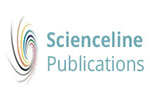(2024) Anatomical and Histological Study of the Female Reproductive System of Green Freshwater Turtle (Chelonia mydas) During Breeding Season in Iraq. World's Veterinary Journal. pp. 26-32. ISSN 23224568
|
Text
WVJ14(1)26-32,March25,2024.pdf - Published Version Download (575kB) |
Abstract
Turtles are found in large numbers in Iraqi rivers, due to the availability of a suitable environment for reproduction and food. The breeding season begins from May to the end of October. The current study aimed to evaluate the anatomical and histological characteristics of the green freshwater turtle (Chelonia mydas) during the breeding season in Iraq. The samples included eight adult turtles within the age range of 11-14 years that were collected from Shatt Al-Hilla (Iraq) at month June. To investigate the reproductive system histological techniques and hematoxylin and eosin staining were used and before that the animals were anesthetized with chloroform. The results indicated two active ovaries and oviducts which fill the whole abdominal cavity. The mean weights of left and right ovaries and left and right oviducts in the turtles with average weights of 698 ± 0.05 g were 19.5 ± 0.01 g, 22 ± 0.022 g, 3.3 ± 0.05 g, and 4 ± 0.05 g respectively. The mean lengths of carapace, left ovary, right ovary, left oviduct, and right oviduct were 24 ± 0.08 cm, 15.9 ± 0.01 cm, 17± 0.04 cm, 13 ± 0.022 cm, 14 ± 0.056 cm. Anatomically the oviducts include the infundibulum, magnum, isthmus, uterus, and vagina. The infundibulum indicated a funnel-shaped membrane while the magnum was the muscular coiled long tube. The isthmus was shorter and less coiled than the magnum, the uterus appeared as the widest, thickest, and less coiled dark tube and swollen into the posterior to form a cyst-like part, and the vagina was muscular in structure. Histologically, the magnum and uterus were formed from mucosa, muscularis, and serosa. In both parts of the magnum and uterus, were branched crypt-like depressions that appeared devoid of sperm. The widespread distribution of this species in Iraqi rivers could be due to the activity of the ovaries and oviducts during the breeding season, which extends for 6 months. © The Author(s) 2024. All Rights Reserved.
| Item Type: | Article |
|---|---|
| Keywords: | chloroform, abdominal cavity; adult; age distribution; anatomical variation; anesthesiological procedure; animal cell; animal structures; animal tissue; Article; breeding; Chelonia; female; female genital system; hematoxylin and eosin staining; histology; Iraq; myometrium; nonhuman; organ weight; ovary; ovary weight; oviduct; oviduct infundibulum; oviduct isthmus; oviduct magnum; oviduct weight; serosa; staining; uterus; vagina |
| Subjects: | S Agriculture > SF Animal culture |
| Divisions: | World's Veterinary Journal (WVJ) |
| Page Range: | pp. 26-32 |
| Journal or Publication Title: | World's Veterinary Journal |
| Journal Index: | Scopus |
| Volume: | 14 |
| Number: | 1 |
| Publisher: | Scienceline Publication |
| Identification Number: | https://doi.org/10.54203/scil.2024.wvj4 |
| ISSN: | 23224568 |
| Depositing User: | Dr. Alireza Sadeghi |
| URI: | http://eprints.science-line.com/id/eprint/1224 |
Actions (login required)
 |
View Item |


 Dimensions
Dimensions Dimensions
Dimensions